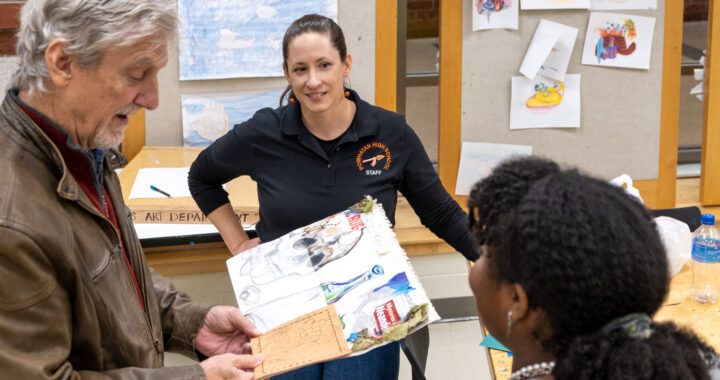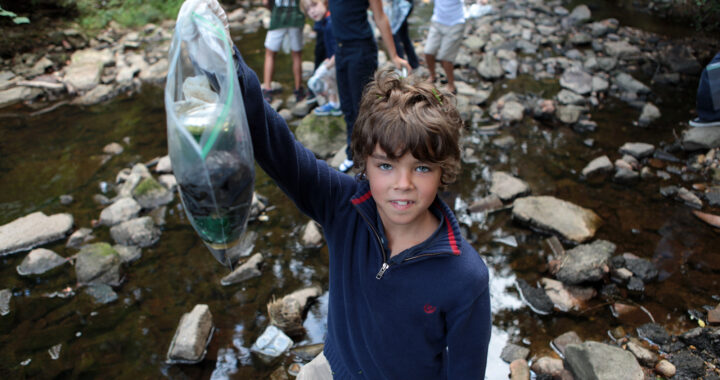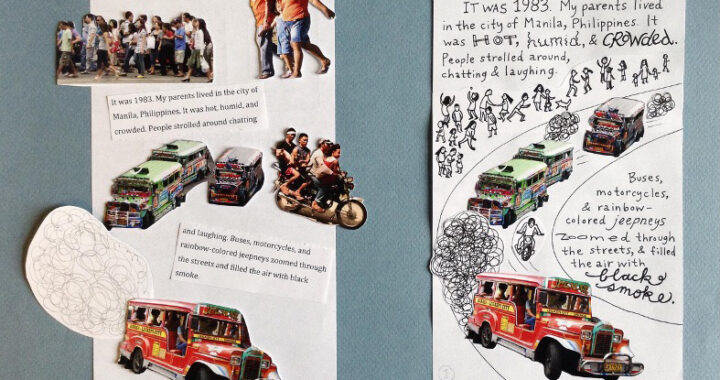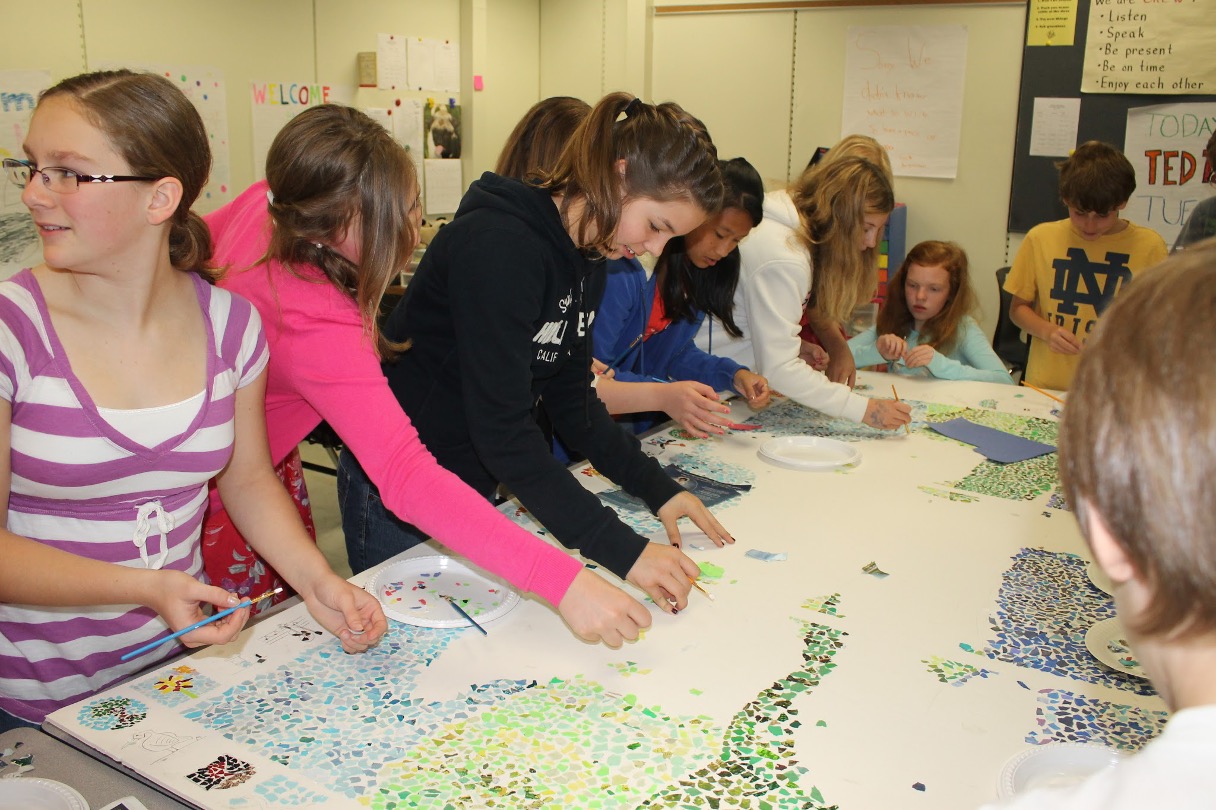
Students work on the mosaic mural.
The world is integrated, cross-curricular, and experiential. Thus, it is logical, natural, and beneficial for students to learn in the same way. To truly prepare students for their futures as engaged participants in society, this type of instruction should be the norm.
From 2011-2012, a hands-on, year-long STEAM project was led by Middle School art teachers Melissa Rickey and Donna Mae Miller, math teacher Kim Maxey, and science teacher Theresa Caraher. The innovative Chesterfield County Public Schools project, Keep Your Watershed Together, Be a Part of the Whole, was made possible by a Partners in the Arts Engaging Creative Thinkers (ECT) Award.
The cross-curricular team set into motion a unit that would extend outside school walls and stretch students’ learning. It explored human impacts on the environment, specifically the Virginia James River watershed, through a variety of art forms and science skills practice. Sixth grade students represented these impacts visually, together with visiting artist Lisa Fisher Johnson, by creating a mosaic. Each student also received a sketchbook to capture their notes and observations throughout. They were part work of art, part reference book, part field journal.

6th grade students trek the hanging bridge to Belle Isle
Learning by Doing and Out in the World
The hallmark of any truly integrated project, and especially a PIA project, is connection with the community. Students brought those sketchbooks on their visit to Belle Isle, the most popular site in the James River Park System. Studying natural processes, conservation, and ecoystem interdependence in the field made those concepts more real and easier to understand. After seeing it with their own eyes, and testing water samples with scientific tools, they would not soon forget where their water really came from.
Robious educators also partnered with the Virginia Museum of Fine Arts to connect math content to specific pieces of museum artwork. After seeing geometry at work in paintings and sculptures, math class felt more relevant and engaging to students. The teachers saw the importance of sharing real-world applications of classroom lessons with students.
This ECT Award project was featured in the 2012 article, “Toward a STEM + Arts Curriculum: Creating the Teacher Team” published in Art Education journal. It continues to serve as an exemplar of what is possible when STEAM is truly integrated and celebrated.
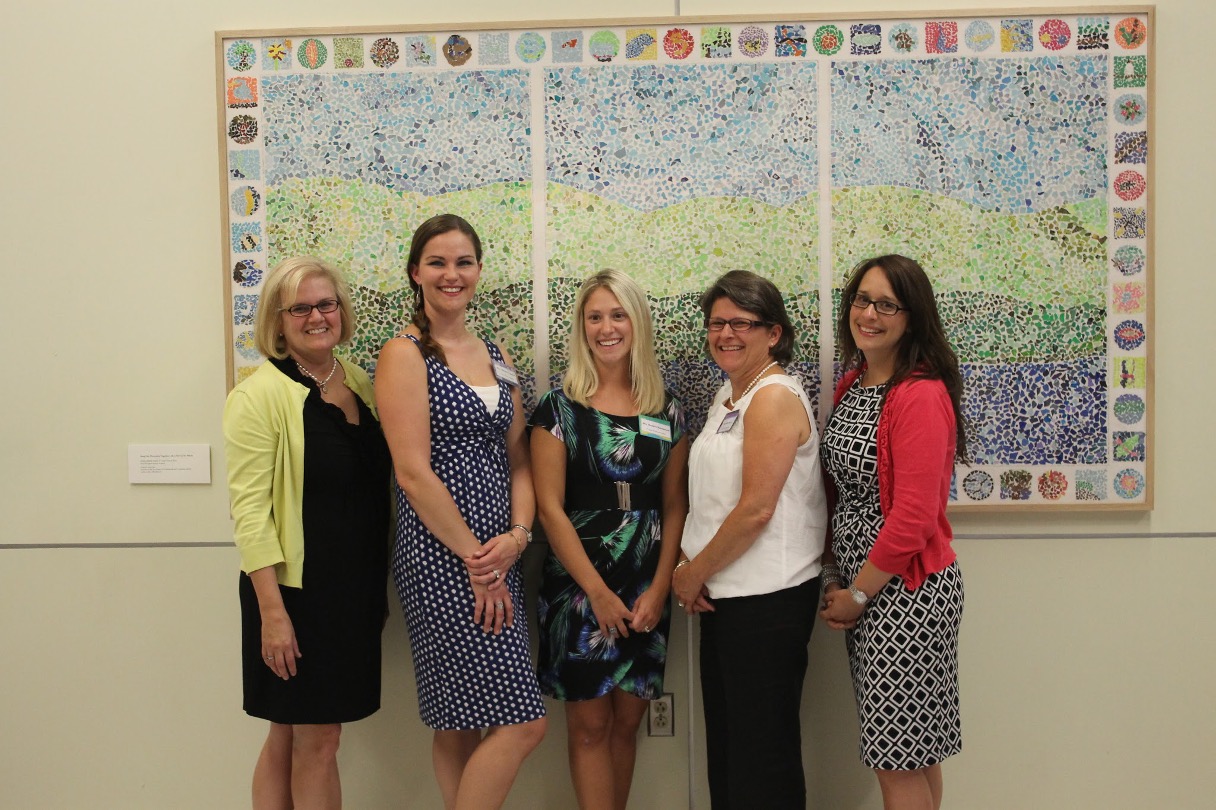
Teachers with the finished mural
Partners in the Arts (PIA) awarded Engaging Creative Thinkers (ECT) grants to teachers from 1994 to 2021. These grants made possible over 200 innovative, interdisciplinary projects in Richmond area schools. Since then, the PIA consortium has supported both educator professional development and in-school project implementation through the Joan Oates Institute for Integrated Learning.
The ECT Awards provided opportunities for teachers to reach all students across content areas, while developing critical thinking, creativity, collaboration, communication, and citizenship. ECT projects engaged a class, grade-level or, whole school, and connected teachers, students, families, and the community.
Alison Travis is the Program Coordinator for Partners in the Arts at the University of Richmond. She has spent ten years working in and with public schools to support integrated, innovative teaching and improve outcomes for all students.
